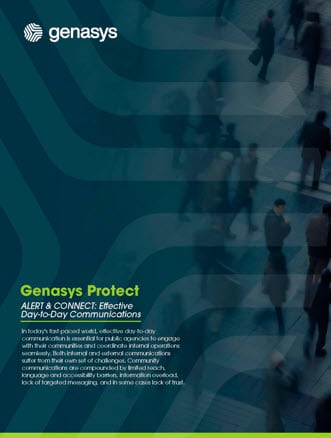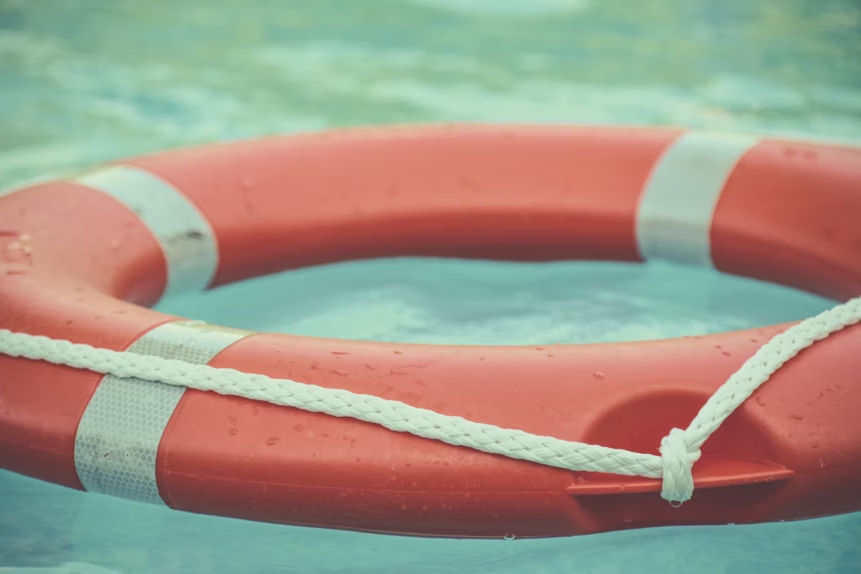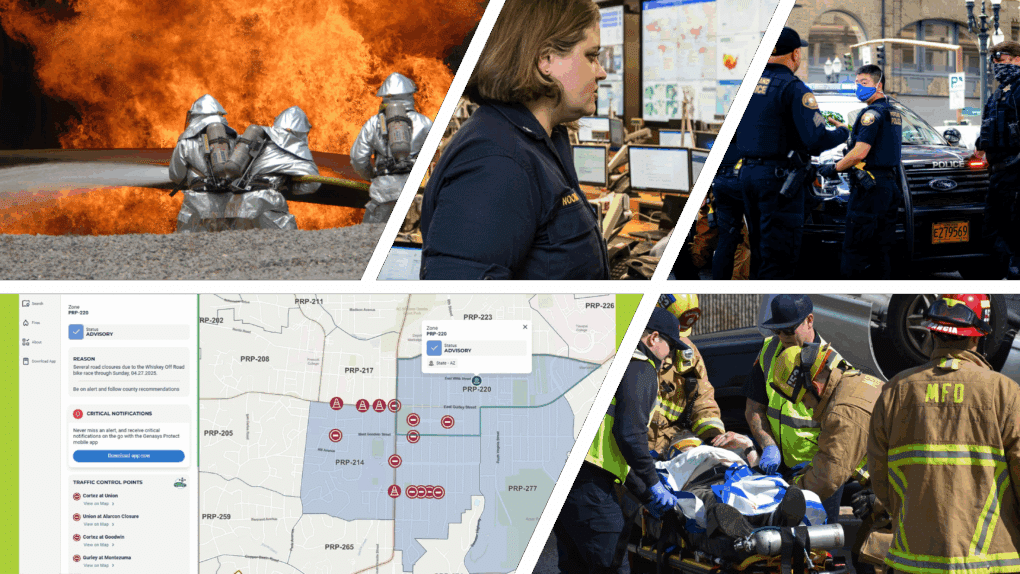LRAD’s (Long Range Acoustic Device) unmatched ability to broadcast audible voice messages with exceptional vocal clarity over long distances and be heard even inside vehicles and buildings, makes it an essential public safety system. By deescalating tense or dangerous situations, LRAD is having a global impact in law enforcement, border security, critical infrastructure protection, and many other areas.
LRAD helps protect communities, standing as a resilient source of communication when it’s needed most. Its impact in disaster relief, search & rescue, and general humanitarian applications has saved lives all over the world during large- and small-scale crises.
Evacuation Alerts
Ordinarily, first responders may be tasked with door-to-door evacuation alerting. Often, during crises, speed is the most important factor when it comes to saving lives. With LRAD, first responders know that their warnings and instructions are being heard by residents in their homes, enabling them to reach entire neighborhoods in mere minutes. That is why law enforcement personnel used a vehicle mounted LRAD to issue wildfire warnings and evacuation orders to residents in La Plata County, Colorado.
First Responder Coordination
Clear communication better coordinates first responders and volunteers risking their lives to protect their communities. After the 2014 landslide in Oso County, Washington, rescue crews used a helicopter mounted LRAD to inform first responders and recovery workers of other potential landslides. This improved their effectiveness and, most importantly, kept them safe.

Disaster Relief & Recovery
LRAD systems also stand out due to their independence and resilience. After the 2011 Japan earthquake and tsunami, LRAD 100X and 500X systems provided mass communication capabilities in the wake of the devastation that severely damaged local infrastructure and made other electronic channels unavailable. Similarly, in Haiti, LRADs were used to broadcast critical information in multiple languages to survivors gathered around aid stations following the 2010 earthquake.
Years may have passed, but none of us have forgotten the devastation caused by Hurricane Katrina. Millions of Gulf Coast and New Orleans residents who’d lost everything were left stranded atop cars and houses surrounded by floodwaters. During those desperate days, LRADs could be heard by survivors as search and rescue crews announced that help was on the way and instructed everyone to stay put until help arrived.
Non-Profit Aid
Malawi had one of the highest HIV prevalence rates for countries in the world in 2000. Since 2008, the Global AIDS Interfaith Alliance (GAIA) and The Elizabeth Taylor AIDS Foundation (ETAF) have partnered to bring health care to over 1 million residents in the rural Mulanje and Phalombe districts. In 2016, Genasys donated 4 LRAD systems to GAIA and ETAF for use on mobile health clinics in Malawi. The communication systems are being utilized to broadcast Anti-Siren® acoustic tones, greetings, clinic services and health education information to rural villagers in the rural districts. As of 2022, HIV prevalence rates in Malawi have fallen more than 50% since 2000.
“Genasys’ generous donation equips our mobile clinics with versatile public address systems to better reach the communities we serve in Malawi.” – Joel Goldman, ETAF Managing Director
Suicide Prevention
Law enforcement crisis negotiators hone their skills to be as persuasive as possible, but their skills are wasted if their voice fails to reach people in crisis.
Seattle, WA police spent more than 14 hours trying to dissuade a distraught man from jumping off a bridge near Qwest Field. Initially, officers attempted to communicate by shouting and using bullhorns, which proved ineffective. An LRAD system was then used to communicate to the man without uniformed officers in sight.
“The LRAD was deployed with Officer Tim Allen as the primary communicator. Within two to three minutes after beginning to tell the subject to remove himself from the roof, he complied and was subsequently placed into custody without incident.” – Captain Steve Brown, West Precinct Commander
To Sum Up
LRAD’s humanitarian impact extends far beyond its role as a communication device; it stands as a beacon of hope in times of crisis. LRAD systems have proven instrumental in saving lives and protecting communities worldwide. Whether aiding in evacuation alerts or providing crucial communications in non-profit aid missions and suicide prevention efforts, LRAD’s versatility and effectiveness make it an indispensable tool for first responders and humanitarian organizations.
Contact Genasys to learn more about protective communications software that ensures you’re ready when it matters.

















